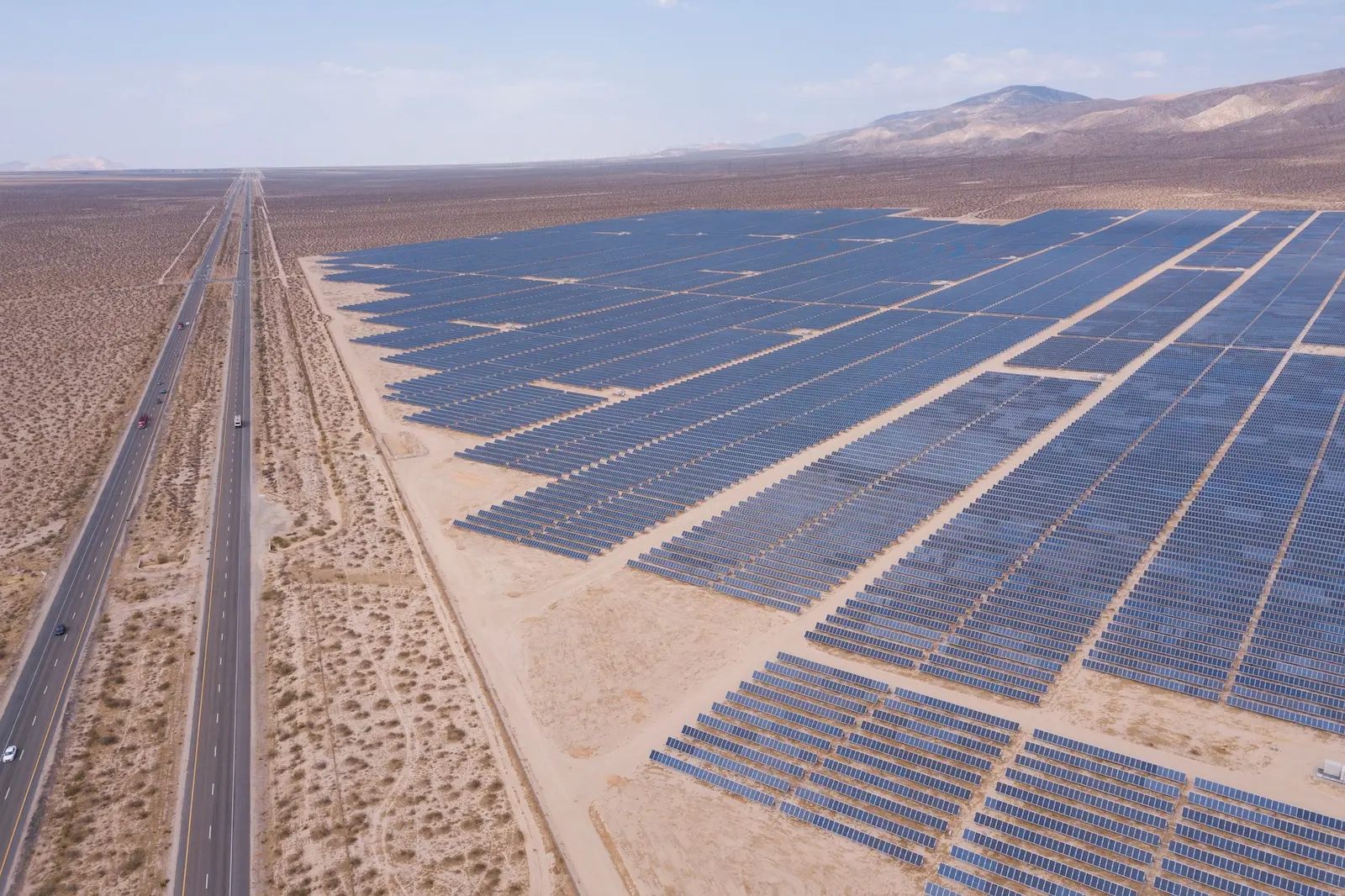This coverage is made possible through a partnership between Grist and WABE, Atlanta’s NPR station.
Three years ago, one of the country’s largest electric utilities, Southern Company, made a splash when it announced it would retire most of its coal-fired power plants in the coming years, a major step toward the company’s stated goal of net zero greenhouse gas emissions by 2050.
Southern’s subsidiary utilities — the companies that actually run the coal plants to provide electricity to homes and businesses — backed up the announcement by seeking and obtaining approval to close coal plants from the powerful state regulators who oversee them.
But now the utilities are backtracking. They say they need to meet an extraordinary spike in demand for electricity, mostly from the large facilities packed with computer servers that enable intensive online activity like generative AI and cryptocurrency, known as data centers.
In its latest integrated resource plan, or IRP, Southern Company subsidiary Georgia Power forecasts that demand will go up by 8,200 megawatts (MW) by the winter of 2030-31, more than three times the output of the new nuclear reactors at Plant Vogtle, the first new nuclear reactors in the U.S. in decades, which Georgia Power and other utilities just spent more than $30 billion to build. To meet that growth, the company is requesting a range of resources, including upgrades to existing nuclear plants, more renewable energy, and improvements to the overall power grid — but it’s also asking to extend the life of heavily-polluting coal plants that were previously slated for retirement.
This move is part of a national trend. The data center industry is booming all over, from Virginia to Texas to Oregon, and utilities across the country are responding by building new fossil fuel resources or delaying retirements, all at a time when scientists agree that cutting fossil fuel emissions is more urgent than ever. More than 9,000 MW of fossil fuel generation slated for closure has been delayed or is at risk of delay, and more than 10,800 MW of new fossil fuel generation has been planned, according to the sustainability research and policy center Frontier Group.
The backslide into fossil fuels is alarming to environmental and consumer advocates, and not only because it stands to slow down climate action and extend the harmful effects of fossil fuel use. Some also question the purported growth in demand — meaning utilities could be doubling down on climate-warming coal and gas to meet energy demand that won’t actually materialize.
When Georgia Power requested permission to retire most of its coal plants by 2028, the decision wasn’t directly about reducing emissions. Rather, the utility had deemed the plants “uneconomic” — it would no longer make economic sense to keep running them. A key factor in that calculus was the cost of bringing old plants into compliance with new federal emissions restrictions. The future of that rule is now uncertain. The Supreme Court last fall ordered that the emissions rule could go into effect while legal challenges from states and power companies proceed. As a candidate, President Donald Trump promised to repeal the rule.
Regardless of the motive, environmental groups and large companies with their own emissions targets to hit applauded the move to close the coal plants.
So Southern Environmental Law Center senior attorney Jennifer Whitfield called Georgia Power’s request to renege on some coal closures an “odd choice.”
“It is not only an expensive and dirty fuel that Georgia Power didn’t even want a couple of years ago for some of these plants, but the data centers don’t want it, either,” she said. “They want clean energy.”
Though controversial, the proposal to delay coal plant closures isn’t exactly surprising or new. Last year, the Georgia Public Service Commission approved a power purchase deal between Georgia Power and its sister company Mississippi Power that will keep a Mississippi coal plant open beyond its planned retirement date. That move, too, was meant to cover rising demand that Georgia Power said came mostly from data centers. Other utilities have proposed delaying coal unit closures in Virginia and West Virginia, according to the Frontier Group analysis.
Environmental advocates have applauded coal retirements, and are now decrying the reversals, because of the many negative impacts of burning coal to make electricity. Along with airborne pollution that can harm people and contribute to climate change, burning coal creates residual material known as coal ash that poses serious health risks if it seeps into groundwater. Often, the costs of cleaning up and storing coal ash are passed on to customers.
“Extending the lives of uneconomic coal plants, especially if tied to energy-guzzling data centers, makes no sense when better investments in renewable energy and energy efficiency are clearly available,” said Liz Coyle of consumer advocacy group Georgia Watch.
While data centers are certainly not new — computing and the internet require data servers, and our increasingly digital lives demand ever more data processing capacity — the recent explosion has taken utilities and policymakers alike by surprise.
Georgia Power’s planning is good evidence of that: In 2023, the utility took the unusual step of filing an IRP update in between its regularly-scheduled plans in 2022 and 2025. Georgia Power claimed that demand for energy was increasing so much and so quickly that the company needed to make and buy more power immediately. The purported demand from large data centers popped up so quickly that the utility didn’t foresee it less than two years before and insisted it couldn’t wait another year to address the issue.
As utilities scramble to meet the data center demand they claim is coming, lawmakers and regulators are also playing rapid catch-up.
In Georgia, data centers enjoy a sales tax exemption on the high-tech equipment they need to run, which was passed in 2018 and later renewed with little fuss. The state offers many such tax incentives to economic development projects, part of an ongoing effort to remain business-friendly that the governor and other state leaders frequently boast about.
But in 2024, as Georgia Power’s highly unusual request for more energy shone a spotlight on the enormous energy demands of data centers, the legislature reconsidered. Lawmakers ultimately passed a bill to pause the data center tax break while a study was conducted to evaluate the state’s energy and water resources. Governor Brian Kemp vetoed the bill. This year, the state House of Representatives is forging ahead with the study even as the tax break remains in place and new, large data centers continue to be announced.
“We want to make sure that we look at how sustainable our energy production is, our energy usage, and certainly our water usage,” House Speaker Jon Burns said when he announced the study committee.
The Georgia Public Service Commission, meanwhile, has taken steps to address a major concern that came up during the interim IRP. New power generation and transmission infrastructure is expensive, and consumer advocates and the commissioners worried regular customers would end up paying for costs created in the scramble to power data centers. So in January, the commission approved new rules meant to prevent the costs from being passed on to others.
These rules, commission chair Jason Shaw said, are just a first step in dealing with a rapidly changing issue.
“We’ve got to be flexible in terms of keeping an open mind in how we deal with this,” he said. “And we’re also looking at what other states are doing, because Georgia’s growing faster than most but we’re not the only state that’s dealing with this.”
Policymakers elsewhere are indeed grappling with these same concerns. In Virginia, the state leading the data center boom, lawmakers have introduced a litany of bills on data centers this year, aiming to track their energy and water use, ensure residents and other businesses aren’t subsidizing their energy needs, and assess the impact of new data centers before they’re approved. Legislators in New York and Oregon are working on similar measures.
Even as lawmakers and regulators reconsider the impacts, data center companies enjoy tax breaks in many states just as they do in Georgia. Data centers receive subsidies of some form in 22 states, according to a recent report by Frontier Group, Environment America, and the U.S. Public Interest Research Group.
Although the 2025 IRP builds on the trend of skyrocketing demand predictions in other recent filings from Georgia Power and indeed the nationwide trajectory, some consumer advocates are skeptical of the company’s forecasts. Commissioners and advocates questioned the projections closely during hearings last year over Georgia Power’s urgent request for more energy in the 2023 IRP update.
“It’s not just a math exercise,” Jeffrey Grubb, Georgia Power’s director of resource planning, said of the projections at the time. “It’s based on facts. It’s tangible projects.”
Still, Public Service Commission staffers tasked with advocating for the public interest sharply criticized how Georgia Power factored those projects into their forecast, arguing the company inflated the probability that the new demand would actually materialize. Experts have also questioned the projections from Georgia Power and other utilities because multiple states are vying to attract the data centers that are driving the demand growth.
“I think there is a real overestimation of the power requirements throughout the southeast,” Georgia Tech professor and energy expert Marilyn Brown told Grist last year. “[The data center companies are] touring states and they’re asking for the best deal that these states can offer them for clean electricity. So what I’m seeing … it’s like double counting.”
If a company is considering building a data center in either Georgia or Tennessee, for instance, Brown said utilities in both states may factor in the large energy demands of that potential new customer — even though in reality, only one data center will be built.
Even within the electric utility industry, demand projections for data centers are uncertain and vary widely, according to the Frontier Group report. One forecast by the Electric Power Research Institute finds data center demand could grow by as little as 29 percent or as much as 166 percent by 2030. The industry forecasts for 2030 cited in the report differ by as much as a staggering 200 terawatt-hours, or 200 million megawatt-hours.
The same report also points to the risks of inflated projections. In the 1950s and ’60s, it explains, electricity demand grew rapidly amid the postwar economic boom and explosion of new technology. The North American Electric Reliability Council predicted this growth of more than 7 percent a year would continue, and utilities built resources accordingly. But in reality, the boom leveled off. Projects were canceled and utilities defaulted on bonds, according to the report.
The current moment, the paper argues, could go either way — and depends in large part on a choice as to “whether rapid growth of energy use for technologies such as GenAI and crypto mining are worth the pollution, disruption and costs they impose.”
This story was originally published by Grist with the headline Georgia was about to retire coal plants. Then came the data centers. on Feb 12, 2025.
Utilities nationwide are falling back on fossil fuels to meet huge energy demand. Buildings, Climate & Energy, Energy, Georgia PSC Grist










